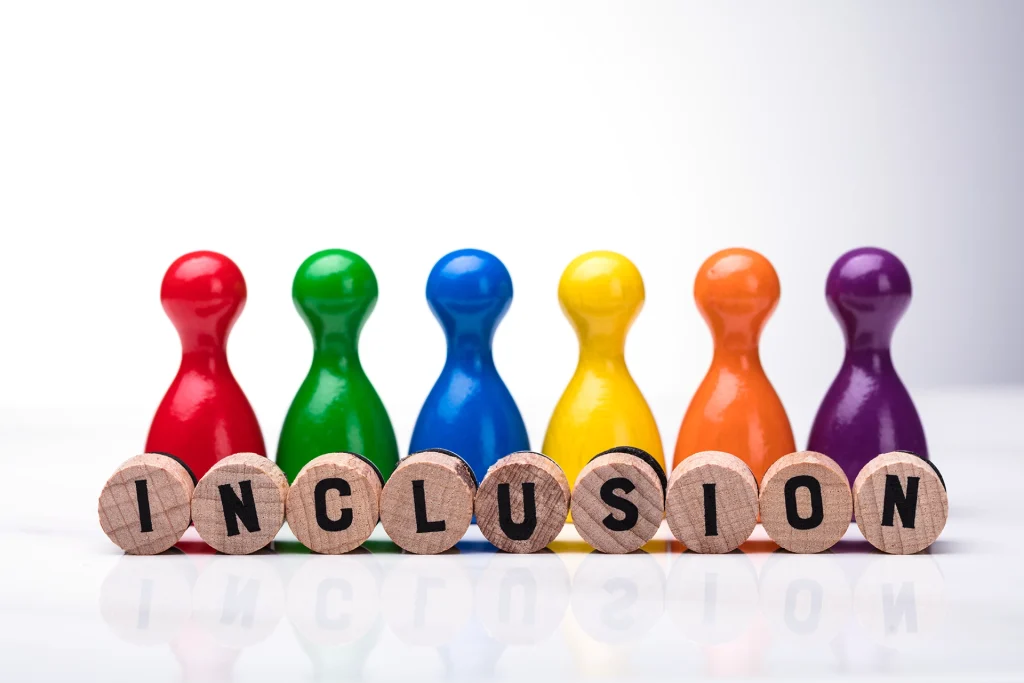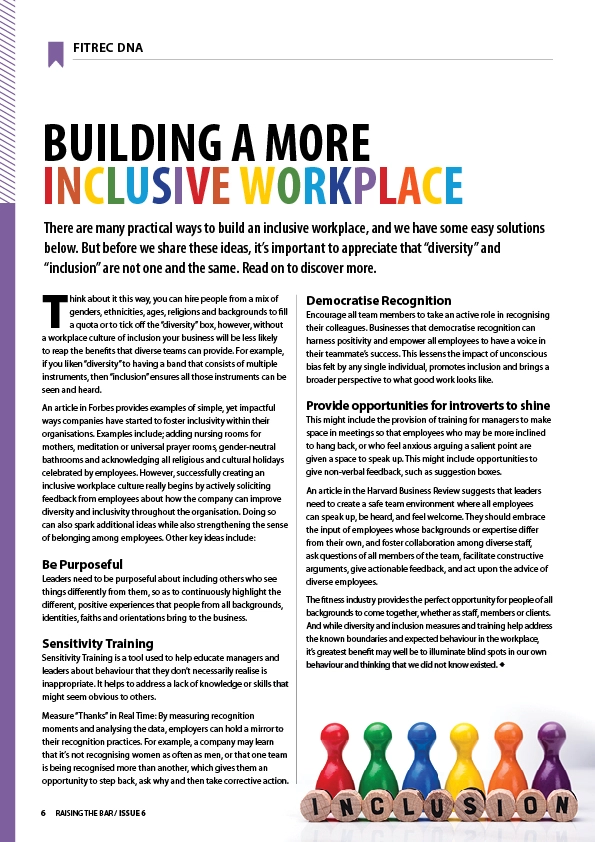Building a more inclusive workplace

Think about it this way, you can hire people from a mix of genders, ethnicities, ages, religions and backgrounds to fill a quota or to tick off the “diversity” box, however, without a workplace culture of inclusion your business will be less likely to reap the benefits that diverse teams can provide. For example, if you liken “diversity” to having a band that consists of multiple instruments, then “inclusion” ensures all those instruments can be seen and heard.
An article in Forbes provides examples of simple, yet impactful ways companies have started to foster inclusivity within their organisations. Examples include; adding nursing rooms for mothers, meditation or universal prayer rooms, gender-neutral bathrooms and acknowledging all religious and cultural holidays celebrated by employees. However, successfully creating an inclusive workplace culture really begins by actively soliciting feedback from employees about how the company can improve diversity and inclusivity throughout the organisation. Doing so can also spark additional ideas while also strengthening the sense of belonging among employees. Other key ideas include:
Be Purposeful
Leaders need to be purposeful about including others who see things differently from them, so as to continuously highlight the different, positive experiences that people from all backgrounds, identities, faiths and orientations bring to the business.
Sensitivity Training
Sensitivity Training is a tool used to help educate managers and leaders about behaviour that they don’t necessarily realise is inappropriate. It helps to address a lack of knowledge or skills that might seem obvious to others.
Measure “Thanks” in Real Time: By measuring recognition moments and analysing the data, employers can hold a mirror to their recognition practices. For example, a company may learn that it’s not recognising women as often as men, or that one team is being recognised more than another, which gives them an opportunity to step back, ask why and then take corrective action.
Democratise Recognition
Encourage all team members to take an active role in recognising their colleagues. Businesses that democratise recognition can harness positivity and empower all employees to have a voice in their teammate’s success. This lessens the impact of unconscious bias felt by any single individual, promotes inclusion and brings a broader perspective to what good work looks like.
Provide opportunities for introverts to shine
This might include the provision of training for managers to make space in meetings so that employees who may be more inclined to hang back, or who feel anxious arguing a salient point are given a space to speak up. This might include opportunities to give non-verbal feedback, such as suggestion boxes.
An article in the Harvard Business Review suggests that leaders need to create a safe team environment where all employees can speak up, be heard, and feel welcome. They should embrace the input of employees whose backgrounds or expertise differ from their own, and foster collaboration among diverse staff, ask questions of all members of the team, facilitate constructive arguments, give actionable feedback, and act upon the advice of diverse employees.
The fitness industry provides the perfect opportunity for people of all backgrounds to come together, whether as staff, members or clients. And while diversity and inclusion measures and training help address the known boundaries and expected behaviour in the workplace, it’s greatest benefit may well be to illuminate blind spots in our own behaviour and thinking that we did not know existed. ®
